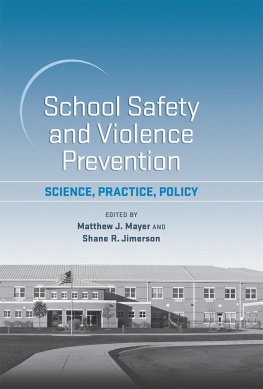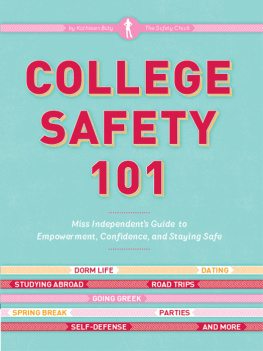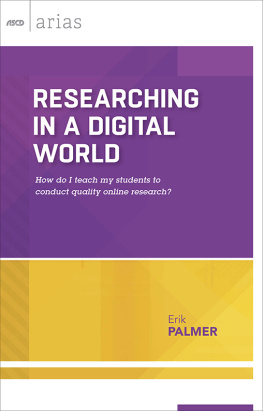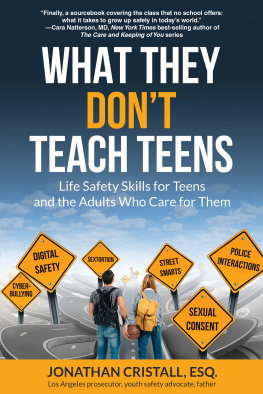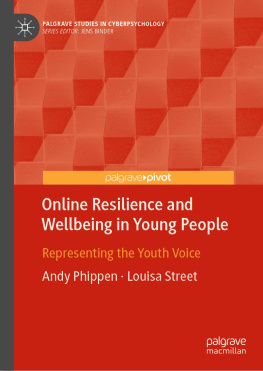CYBER
Savvy
CYBER
Savvy
EMBRACING DIGITAL SAFETY AND CIVILITY
NANCY WILLARD


FOR INFORMATION:
Corwin
A SAGE Company
2455 Teller Road
Thousand Oaks, California 91320
(800) 233-9936
Fax: (800) 417-2466
www.corwin.com
SAGE Ltd.
1 Olivers Yard
55 City Road London EC1Y 1SP United Kingdom
SAGE India Pvt. Ltd.
B 1/I 1 Mohan Cooperative Industrial Area
Mathura Road, New Delhi 110 044
India
SAGE Asia-Pacific Pte. Ltd.
33 Pekin Street #0201
Far East Square
Singapore 048763
| Acquisitions Editor: | Arnis Burvikovs |
| Associate Editor: | Desire Bartlett |
| Editorial Assistant: | Kimberly Greenberg |
| Production Editor: | Amy Schroller |
| Copy Editor: | Matthew Sullivan |
| Typesetter: | Hurix Systems Pvt. Ltd. |
| Proofreader: | Ellen Howard |
| Indexer: | Sheila Bodell |
| Cover Designer: | Scott Van Atta |
| Permissions Editor: | Karen Ehrmann |
Copyright 2012 by Corwin
All rights reserved. When forms and sample documents are included, their use is authorized only by educators, local school sites, and/or noncommercial or nonprofit entities that have purchased the book. Except for that usage, no part of this book may be reproduced or utilized in any form or by any means, electronic or mechanical, including photocopying, recording, or by any information storage and retrieval system, without permission in writing from the publisher.
Printed in the United States of America.
Library of Congress Cataloging-in-Publication Data
Willard, Nancy E.
Cyber savvy: embracing digital safety and civility/Nancy Willard.
p. cm.
Includes bibliographical references and index.
ISBN 978-1-4129-9621-1 (pbk.)
1. Internet and children. 2. Internet and teenagers.
3. InternetSafety measures. 4. Parenting. I. Title.
HQ784.158W56 2012
004.678 0835dc23
2011034050
This book is printed on acid-free paper.
11 12 13 14 15 10 9 8 7 6 5 4 3 2 1
Contents

A Cyber Savvy website has been set up to support this book at http://embracingdigitalyouth.org. This site provides access to surveys that can be used to support the instructional and evaluation activities suggested in this book, as well as stories and news articles that can be used to stimulate student discussions and a teachers forum.
Preface
C yber Savvy: Embracing Digital Safety and Civility provides guidance to educators, mental health professionals, and law enforcement officers on how to effectively implement instructional activities to address these issues of safety and civility with todays digital youth.
The Cyber Savvy instructional approach is grounded in the understanding that the vast majority of young people want to make good choices, do not want to be harmed, and do not want to see their friends or others harmed. This instructional approach focuses on positive social norms, effective practices, and the positive engagement of witnesses. Use of local data, gathered through online surveys of students, will provide insight to guide instruction and positive messaging, as well as provide the ability to engage in ongoing evaluation to ensure effectiveness.
Effective education can help young people be more mindful of the possible consequences of their actions, increase their problem-solving skills, provide insight into effective protective actions and responses, and encourage them to engage in responsible behavior that protects the rights of others and promotes civility.
AUDIENCE
The primary audience for this book is educational technology coordinators, school librarians, health teachers and counselors, community mental health professionals who work in schools, and law enforcement officers who work with schools. Ultimately, the objective is that all content teachers will gain sufficient insight to effectively integrate instruction into the learning moments that arise. However, this initial team of professionals must assume the leadership in planning for the delivery of this instruction, as well as the bulk of the direct instruction. Having older students consult with this team is also important.
The reason this multidisciplinary team is important is because this situation is like the proverbial blind men trying to describe an elephant. These professionals have the expertise necessary to describe parts of the elephant but will have to work together to be able to see the entire elephant.
- Educational technology specialists have excellent understanding of the technologies and digital culture.
- School librarians have excellent insight into media literacy, which is an important foundation for all aspects of safe, ethical, and responsible online behavior.
- Counselors, health education teachers, and community mental health professionals understand effective youth risk prevention.
- School resource officers and other police officers can help students understand when activities may cross the line and involve criminal matters.
- Individuals with important expertise in these issues are walking around schools, likely wearing jeans and, when not in class, listening to iPods and texting friends.
The exciting thing is that when this recommended group of professionals and students talk about these issues, they will find an important commonality.
- Educational technology professionals and school librarians are embracing digital technologies as providing an exciting opportunity to shift to constructivist-based 21st-century instruction. They do not want to communicate messages about these technologies that are grounded in fear.
- Risk-prevention professionals understand effective risk-prevention messaging. They know that scare tactics approaches are ineffective and that the best way to prevent youth risk behavior is focus on positive social norms and youth skill building. Within this community, there is also awareness of the importance of encouraging positive actions of peers.
- The last thing students want to hear is fear messages.
PROTECTING CHILDREN IN THE 21ST CENTURY
The Protecting Children in the 21st Century Act added a provision to the Childrens Internet Protection Act requiring that schools receiving E-Rate and other technology funds provide instruction in Internet safety.
As part of its Internet safety policy, the school must show that it is educating minors about appropriate online behavior, including
Should instruction focus just on the Internet? For todays youth, this discussion must include all digital technologies. With todays cell phones, there is essentially little difference. It is all digitaland all about sharing and interacting.
Is this just about safety? Some of the issues that need to be addressed do relate to safety. But the discussion must be more comprehensive, addressing the interrelated aspects of safety and civility.
The focus of this book is on students in intermediate, middle, and high school grades. By the time young people turn thirteen, they are considered to be capable of engaging in most online activities, other than those specifically limited to adults. Many children lie about their age and enter the general digital world. Thus, by early middle school at the very latest, young people must be prepared to handle most of the safety concerns. Comprehensive coverage of issues related to sexual and personal relationships, however, can be delayed until later in middle school or high school.
Next page

